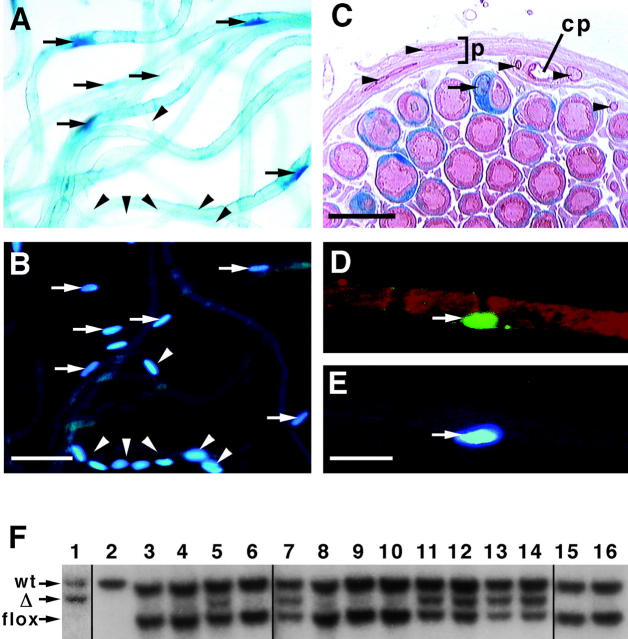Figure 2.
Tissue specificity of Krox20-cre–induced mutations. (A–E) Nerves from reporter lacZ mice (see Akagi et al. 1997) that also contain a Krox20-cre allele were stained for β-galactosidase or β-galactosidase activity. (A and B) Teased nerves stained with X-gal (A) and DAPI (B). (C) X-gal–stained nerves were also osmicated, sectioned, and counterstained with neutral red and eosin. The myelin and axon of an individual nerve fiber stained dark and light red, respectively. (D and E) Teased nerve fiber triple stained with antibodies against myelin basic protein (D, red), β-galactosidase (D, green), and DAPI (E, blue). Arrows point towards β-gal–positive Schwann cells; arrowheads point towards other cells and nuclei that do not stain; perineurium (p) and capillaries (cp). (F) Southern hybridization analysis of DNA digested with BamHI and EcoRV. Lane 1, erbB2 Δ/+; lane 2, wild type; lanes 9 and 10, erbB2flox/+; all other lanes contain DNA obtained from tissues of mice with a genotype Krox20-cre/+; erbB2flox/+. Lane 3, liver; lane 4, muscle; lane 5, ear; lane 6, lung; lane 7, skin; lane 8, spleen; lanes 11 and 12, sciatic nerves; lanes 13 and 14 spinal roots; lane 15, spinal cord; and lane 16, ovaries. Densitometric analysis showed that recombination occurred in 40–50% of cells associated with peripheral nerves. Bars: (B) 50 μm; (C and E) 20 μm.

